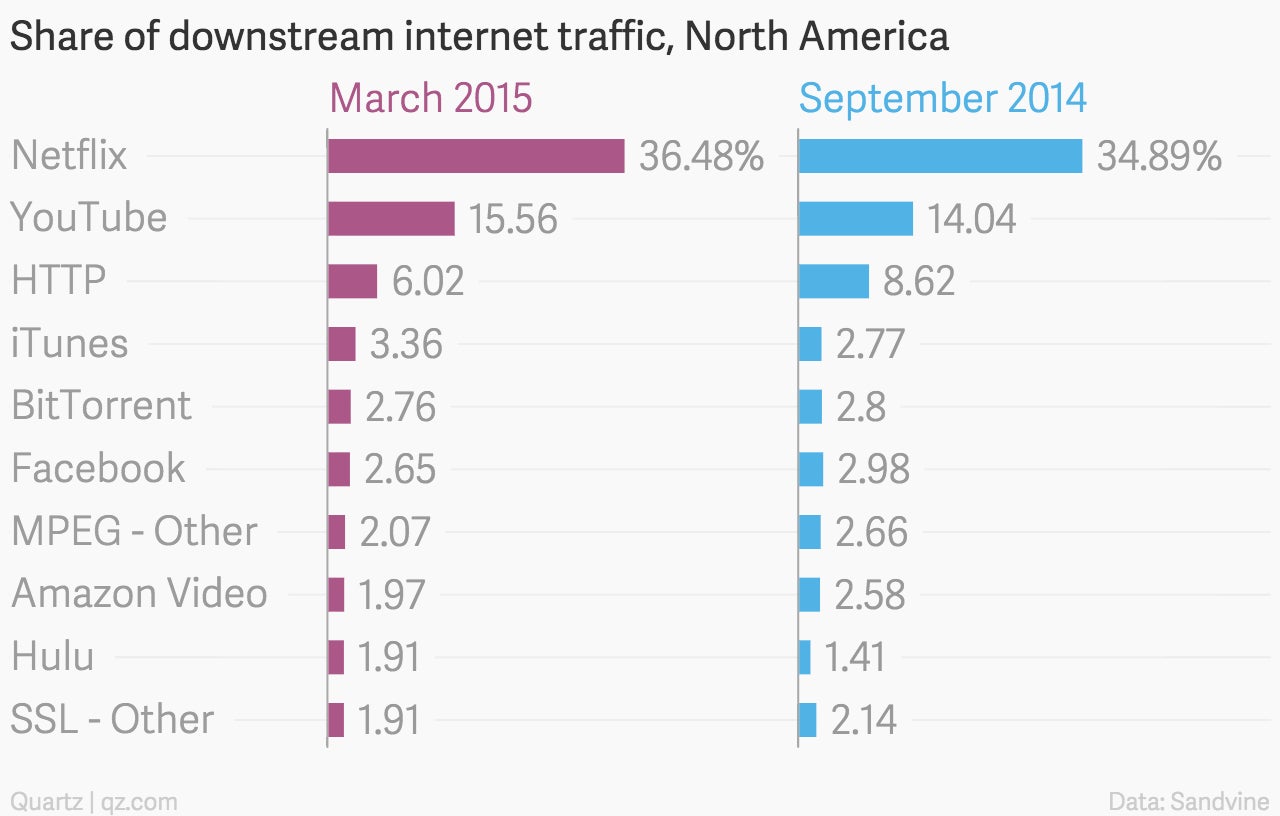Netflix now accounts for nearly 37% of peak web traffic in North America
It’s Netflix’s world, and we’re all just living in it.


It’s Netflix’s world, and we’re all just living in it.
To be more precise: It’s really only Netflix’s continent, North America. That’s where the streaming video company accounts for more than a third of all peak bandwidth usage.
The Canadian broadband networking company Sandvine has released its biannual internet traffic report (pdf), and the results, if not totally unexpected, are still staggering: Netflix accounts for nearly 37% of downstream internet traffic in the US and Canada, up from a little less than 35% in September.

While this is certainly telling of Netflix’s popularity, there are a couple of caveats: Sandvine’s data only account for peak periods (evenings) on fixed networks (meaning that traffic on mobile devices isn’t counted).
Still, Netflix is clearly the king of the internet in North America, accounting for well over double the traffic from YouTube and almost 20 times that of its streaming TV competitor, Hulu.
Amazon Instant Video, the Netflix-like streaming service that Quartz expected to gradually consume more traffic as it became more popular, has actually decreased in its bandwidth usage since September. But given the small sample size and the relatively short time, it’s hard to draw any grand conclusions yet.
Sling TV, Dish Network’s new internet TV service, was responsible for less than 1% of traffic. As Americans cut the cord, and more and more internet bundles (like Apple’s upcoming service) become available, you may see Sling TV and others begin to crack the top 10.
Sandvine also tracked internet traffic during the season five premiere of HBO’s Game of Thrones (Sunday, April 12, at 9:30pm EST). At that pivotal moment, HBO Go, the network’s online platform available to subscribers of its TV channel, accounted for 3.4% of all traffic. HBO Now, the channel’s new standalone streaming service for cord-cutters, which debuted only a few days before, accounted for 0.7%.
During Game of Thrones, Netflix’s traffic dropped to 33.5%.